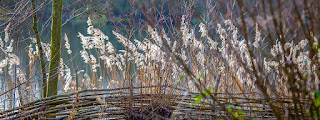When I first ordered the Canon EOS R body in addition to the straightforward adapter giving me access to the direct use of my pre-existing lenses, the ring that appealed was the one that gives the user a ring that allows instant access to a feature that otherwise would mean several key presses through menus to make a single change to a needed setting.
The most useful one that I ever need when using my cameras to shoot rapidly changing subjects such as wildlife and sports, is when lighting situations change due either to backgrounds beyond a subject having an adverse effect on my metering, or when my pre-determined settings are rendered suddenly beyond the preset limits — the beauty of this ring is that I can use it to make a compensation for the circumstances, with my finger taking first pressure on the shutter release as I turn the ring, to add or subtract from the measured exposure, then press the shutter further to take the shot. No taking my eye from the viewfinder and menu-diving to make the change.
This trip was the first occasion to put this to use as the ring arrived in the post that day, and I was considering going out to search for new locations despite the overcast sky as it was not raining and it was surprisingly mild. Having had a poor connection with the phone’s SatNav to the car’s speakers I never reached my original destination, but I did spot the sign to one I had visited previously — a small Nature Reserve at Bromham. So I took the long lane to where it’s entrance provided a small parking area. For this venture I took my Canon 100-400mm MkI lens and my Sigma 1.4x Converter in case I needed the extra throw.
I also added the monopod, to give me a steadier shooting platform as well a a support when negotiating slippery banks. It proved its worth in both modes! This year’s weather has been definitely out of kilter, the last week has been unusually mild, and this was apparent as not all the Autumn leaves had been shed, and the catkins were gently sway in the light breeze.
There were a few birds to be seen flitting across the paths as they flew between the meagre cover either side, a sparrow, a robin, and a rook briefly caught my eye, but there was little birdsong to be heard for most of the time I was there. I put out some birdseed in case there was a chance I might get some shots of these birds, but none came to my carefully dispersed piles on tables or tree stumps, so I moved deeper into the woods, taking stock of possible images that might allow me to check out the new camera body further.
The aspect I still found problematic was using the screen to move the cursor around the scene I was viewing through the eyepiece; I found it was often difficult to move to where I wanted it, as either my finger’s proximity to the eyepiece would move the cursor, or when. I lifted my finger, it would jump to follow my finger as it moved away! I think this maybe down to my being a spectacle wearer, and therefore being farther from the eyepiece. I can see myself having to adapt the way I move the cursor! However, when I get it right the sensor does an excellent job of getting my shots sharp, and the extra file size means the graininess of the higher ISOs I often use is greatly reduced, meaning I can get far more from my longer lenses in difficult lighting.
I am waiting upon a new delivery to Sigma of the 60-600mm Sports lens so that I can see how the lens performs with this body, as it would be a real boon if it really performed well bearing in mind the mentions I have made relating to this full frame sensor. Time, as they say, will tell!




No comments:
Post a Comment